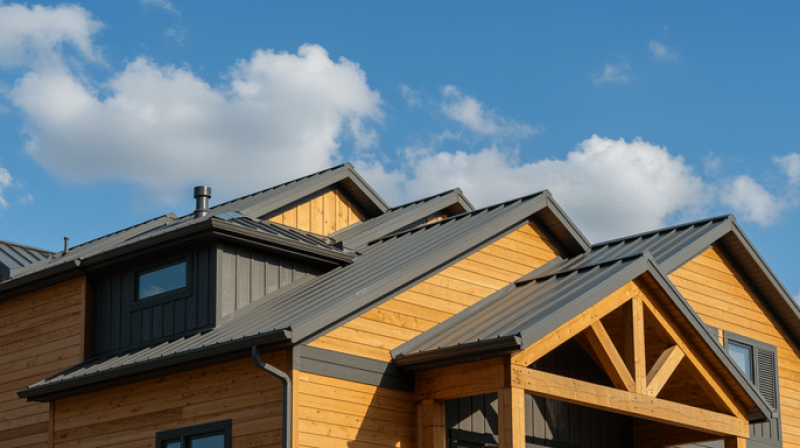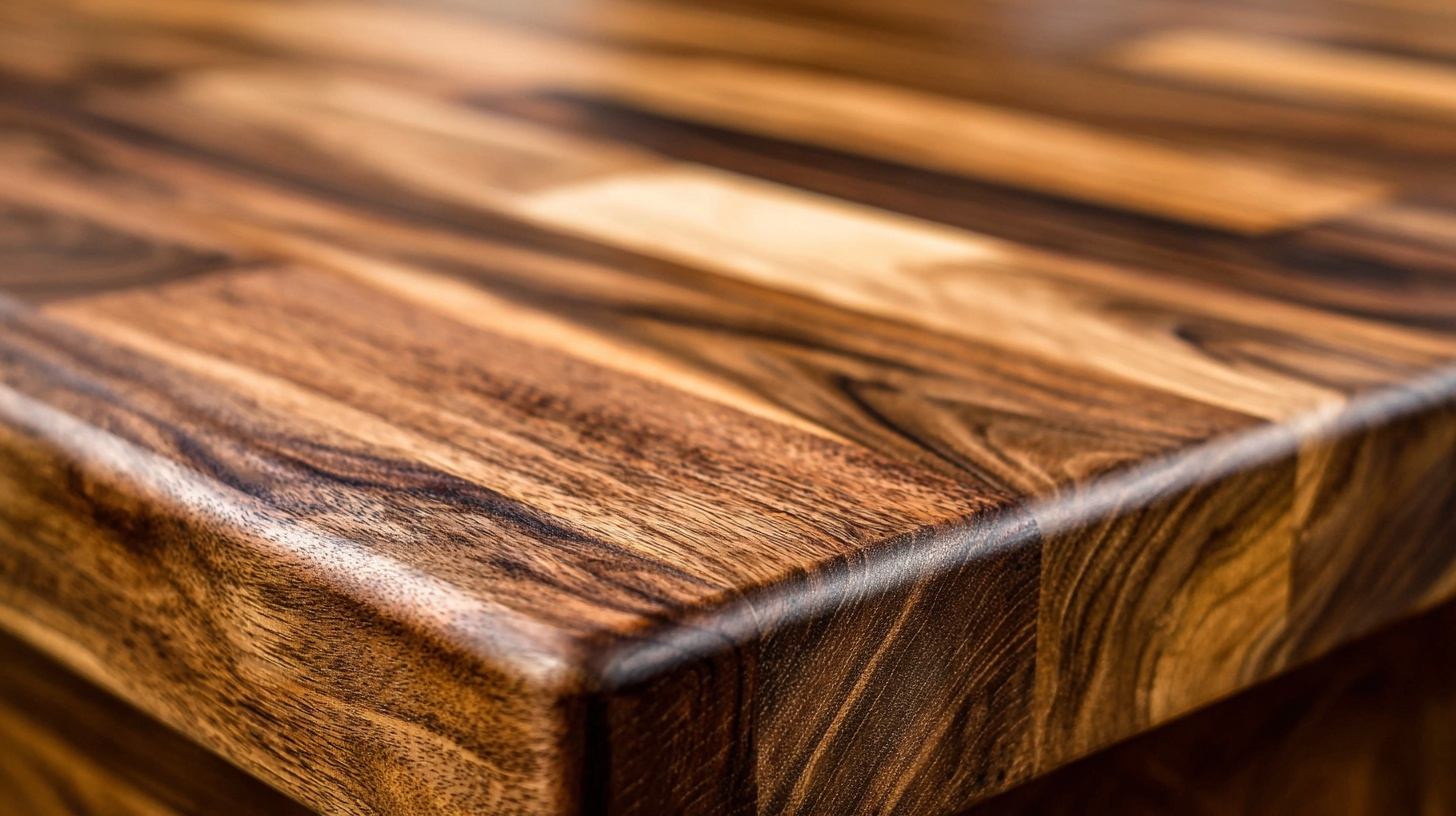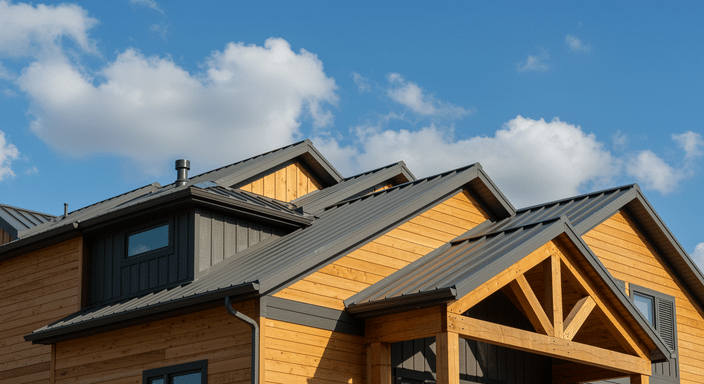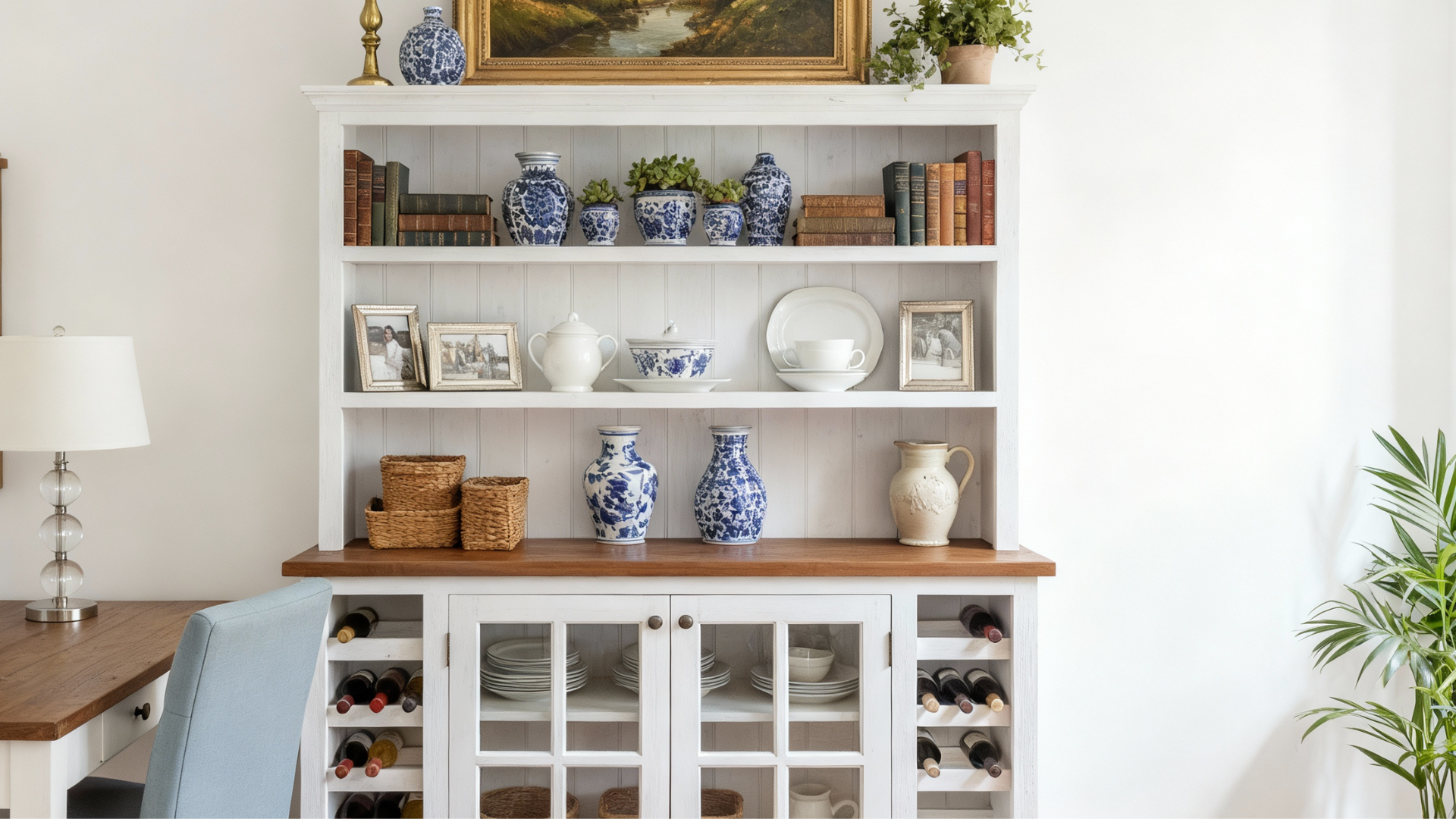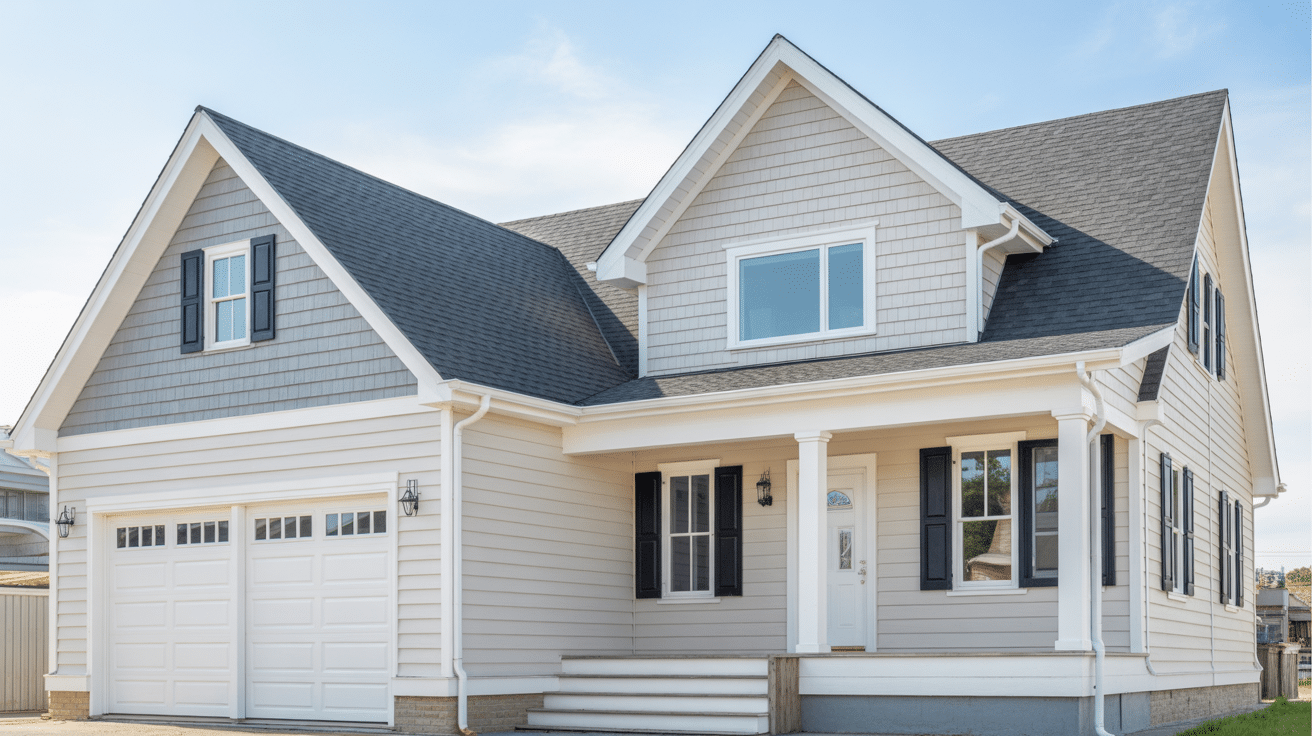Most people notice their roof’s edge but don’t know what that horizontal board is called.
Most folks get confused between Soffit and Fascia. But let me tell you it’s fascia, and it does more than look pretty.
This often-overlooked component protects homes from water damage and supports gutters. Yet many people don’t understand its role until problems appear.
This blog promises to clear up the confusion.
What is Fascia?
Fascia is the vertical board that runs along the lower edge of a roof. It sits right where the roof meets the outer walls.
This board creates a finished look and provides a mounting surface for gutters. It also protects the roof and interior from weather damage.
Think of it as a barrier between the roofline and the elements. Most fascia boards are made from wood, but vinyl, aluminum, and composite materials are common, too.
Pros and Cons
| Pros | Cons |
|---|---|
| Protects roof edges from water damage | Requires regular maintenance and inspection |
| Provides secure mounting for gutter systems | It can rot or decay when exposed to moisture |
| Blocks pests from entering the attic space | Wood fascia needs repainting every few years |
| Improves the home’s exterior appearance | Damaged fascia can be costly to replace |
| Available in multiple durable materials | Poor installation leads to water infiltration |
| Helps maintain proper roof ventilation | Vulnerable to woodpecker damage in some areas |
Purpose of Fascia on a House
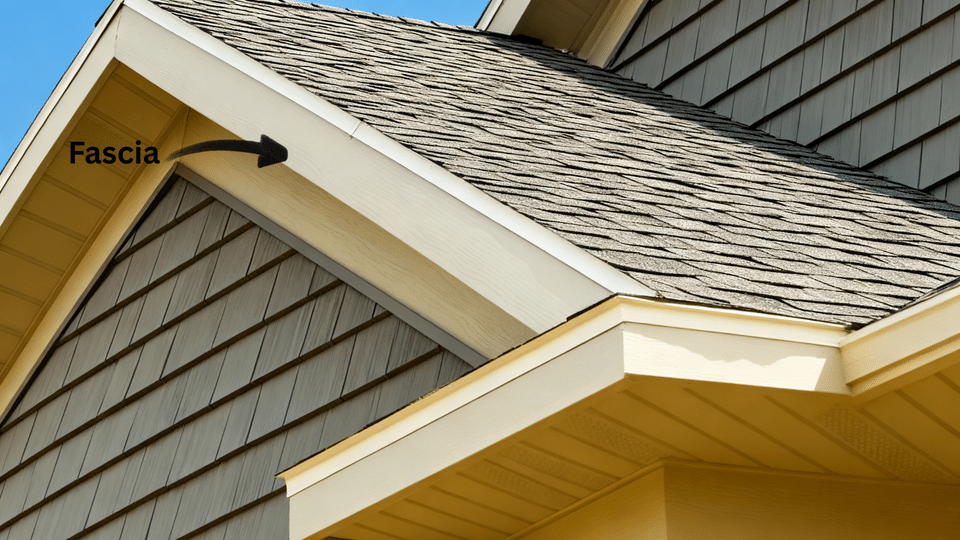
Fascia serves multiple critical functions that protect homes from damage.
These purposes help people appreciate why proper maintenance matters so much.
1. Supports Gutter Systems
Fascia boards provide the mounting surface for gutters around the home’s perimeter. Without sturdy fascia, gutters would have nowhere to attach securely.
The board must be strong enough to handle the weight of full gutters during heavy rainfall and snow.
2. Protects Roof Edges from Water
The fascia acts as a barrier between the roof edge and weather elements. It prevents water from seeping into the roof deck and attic space.
This protection keeps structural wood dry and prevents rot from developing in critical areas of the home.
3. Blocks Pests and Wildlife
Fascia closes off the gap between the roof and exterior walls effectively. It stops birds, squirrels, and insects from entering the attic through vulnerable openings.
Without this barrier, homes become susceptible to infestations that create noise, damage, and unsanitary conditions throughout living spaces.
4. Improves Home Appearance
Clean, well-maintained fascia creates a polished look along the roofline. It provides a finished edge that frames the home’s exterior attractively.
The fascia also offers opportunities to add visual interest through paint colors and material choices that complement the overall design.
5. Adds Structural Support
Fascia boards help stabilize the roof’s lower edge and support rafter ends. They distribute weight evenly across the roof structure during storms and high winds.
This added stability prevents sagging and maintains the roof’s integrity over decades of use and exposure to elements.
Types of Fascia Materials
You can choose from several fascia materials, each with distinct benefits and drawbacks. The right choice depends on budget, climate, and maintenance preferences.
- Wood Fascia: Traditional wood remains popular for its natural look and workability.
- Vinyl Fascia: Vinyl offers a low-maintenance option that resists moisture and never needs painting.
- Composite Fascia: Composite materials blend wood fibers with plastic for improved performance and longevity.
- Aluminum Fascia: Aluminum provides durability without the weight of other materials and won’t rot or warp.
- Fiber Cement Fascia: Fiber cement combines durability with the appearance of real wood at a reasonable price.
- PVC Fascia: PVC fascia stands up to harsh weather conditions without warping, rotting, or peeling over time.
Fascia Costs
Fascia installation costs vary based on material choice, home size, and labor rates in different regions.
The price ranges help with budgeting for repairs or replacements effectively.
| Material | Typical Cost/ft | Average (150 ft) | Lifespan | Maintenance |
|---|---|---|---|---|
| Wood | $1–$3 | $150–$450 | 10–15 years | High |
| Vinyl | $5–$9 | $750–$1,350 | 20–25 years | Low |
| Aluminum | $8–$20 | $1,200–$3,000 | 25–30 years | Low |
| Fiber Cement | $5–$13 | $750–$1,950 | 30–50 years | Medium |
| Composite | $4–$14 | $600–$2,100 | 25–30 years | Low |
| PVC | $3–$7 or $10–$18 | $450–$1,050 or $1,500–$2,700 | 30–50 years | Very Low |
Note: These costs include materials only. Regional differences and contractor availability also affect final pricing.
Other Elements of a Roofline
Fascia works alongside several other roofline components that protect homes from weather damage.
Understanding these elements helps people identify issues and communicate with contractors more effectively.
1. Soffit
Soffit is the material installed underneath the roof’s overhang between the fascia and the house wall. It provides ventilation for the attic while creating a finished look from below.
Proper soffit installation prevents moisture buildup and allows air circulation that reduces cooling costs during the summer months significantly.
2. Drip Edge
Drip edge is a metal strip installed along the roof edges to direct water away from the fascia. It prevents water from running back under shingles and damaging the roof deck.
This small component saves people thousands in water damage repairs by keeping moisture away from vulnerable wood structures.
3. Eaves
Eaves are the lower edges of the roof that extend beyond the home’s exterior walls. They provide shade, protect siding from rain, and add to the home’s design.
The overhang length affects how much protection walls receive from the sun and precipitation throughout different seasons.
4. Rake Board
Rake boards run along the gabled ends of roofs from the eave to the ridge. They provide a finished edge and protect roof sheathing from weather exposure.
These boards also prevent wind-driven rain from penetrating under shingles at the roof’s most vulnerable points during storms.
5. Frieze Board
Frieze boards connect the top of exterior siding to the soffit at the roofline. They create a clean transition between the wall and the roof overhang areas.
This trim piece adds visual appeal while sealing gaps that could allow pests or moisture to enter the home’s structure.
How to Choose Fascia for Your Home Project
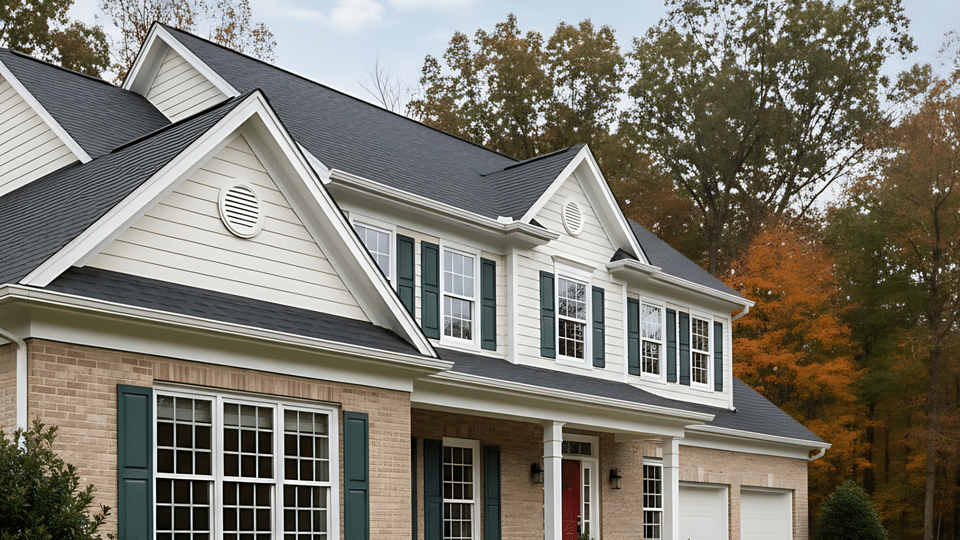
Selecting the right fascia involves evaluating several factors that affect both immediate costs and long-term performance.
Smart choices save money and reduce future maintenance headaches significantly.
Consider Your Climate
Local weather patterns should guide material selection for fascia board installations on homes. Humid areas need moisture-resistant options like vinyl or PVC that won’t rot.
Cold climates require materials that withstand freezing temperatures without cracking or becoming brittle over harsh winter months.
Match Your Home’s Style
Fascia should complement the home’s overall look and existing trim work throughout the property. Traditional homes often look best with wood fascia that can be painted to match.
Modern homes might benefit from sleek aluminum or PVC options that create clean lines and contemporary appeal.
Evaluate Maintenance Requirements
Some people prefer low-maintenance materials that require minimal attention over the years ahead. Wood fascia needs regular painting or staining every few years to prevent deterioration and rot.
Vinyl, aluminum, and PVC options eliminate most maintenance tasks beyond occasional cleaning with a garden hose.
Calculate Long-Term Costs
Initial material prices don’t tell the complete story when planning fascia installation or replacement projects. Cheaper wood might need replacement in ten years, while expensive PVC lasts fifty years.
Factor in painting costs, repairs, and eventual replacement when comparing different material options for true value.
Check Local Building Codes
Building codes in some areas require specific materials or installation methods for fascia boards. Fire-prone regions might mandate fire-resistant materials for all exterior trim and roofing components.
Coastal areas often have special requirements for wind resistance and moisture protection that affect material choices significantly.
Assess Installation Complexity
Some fascia materials require professional installation, while others suit confident DIY people with basic skills.
Heavy fiber cement needs experienced installers with proper equipment and safety training throughout the process. Vinyl and aluminum are lighter and easier to handle for people comfortable working on ladders.
Consider Gutter Compatibility
The fascia must properly support gutter systems that handle roof drainage during rain and snowmelt. Heavier gutters need stronger fascia materials like wood or fiber cement for adequate support.
Lightweight vinyl fascia works fine with standard aluminum gutters, but might struggle with copper systems.
Wrapping It Up
Fascia might seem like a small detail, but it plays a major role in protecting homes from costly damage.
From supporting gutters to blocking pests, this roofline component deserves attention and proper maintenance.
Choosing the right material depends on climate, budget, and how much upkeep people want to handle.
Ready to tackle that fascia project? Start by assessing current conditions and getting quotes from local contractors for comparison.


